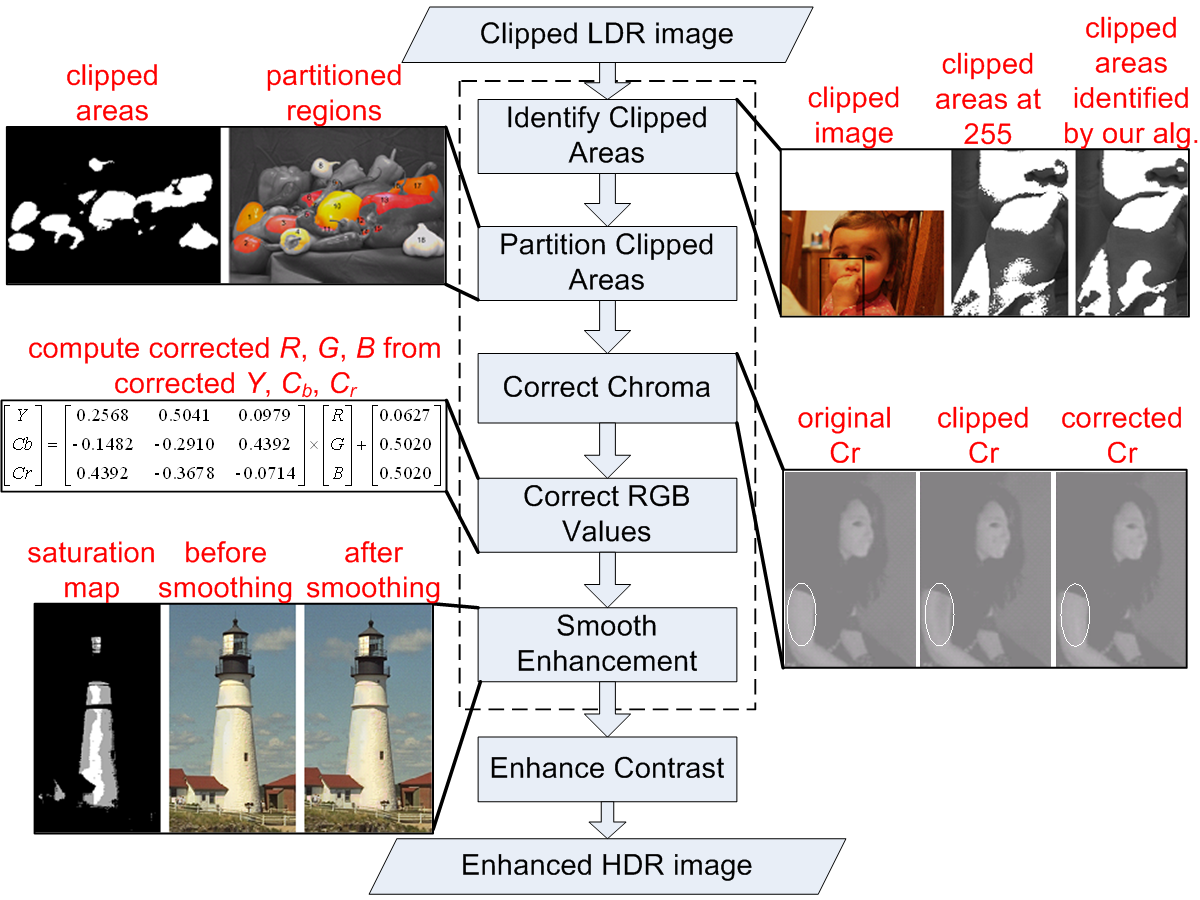Research Interests:
My research interests are in the broad field of digital image and video processing. I am currently focusing on 3D video capturing and processing, 3D quality of experience, and high dynamic range imaging.On-going Research Projects:
Quality of Experience for the Horizontal Pixel Parallax Adjustment of Stereoscopic 3D Videos
When capturing stereoscopic 3D video, video distortions can be avoided by setting up the cameras in parallel. Unfortunately, the resulting 3D scene appears to be in front of the screen, which is uncomfortable for the viewers. This problem can be solved by modifying the horizontal pixel parallax, which brings the picture on and behind the screen. We employ an algorithm that extracts and matches features from both left and right video sequences to automatically shift the video frames so that the closest object to the screen has zero pixel parallax. We then perform subjective tests to show that this parallax-adjusting process significantly increases the 3D quality of experience by 19.86%.
Quality of Experience of Stereoscopic Content on Displays of Different Sizes: A Comprehensive Subjective Evaluation
3D-capable devices have entered the consumer market. The depth that is perceived with stereoscopic content is strongly linked to the size of the screen in which it is displayed. We tested the effect that different display sizes have on the quality of experience of 3D content and we offer some recommendations.
Guidelines for Capturing High Quality Stereoscopic Content Based on a Systematic Subjective Evaluation
Although 3D TVs have already been introduced to the consumer market, the availability of stereoscopic (3D) content remains a serious challenge. Another challenge is that while some manufacturers are introducing 3D cameras and Hollywood is using proprietary solutions, there are no guidelines for consistently capturing high quality stereoscopic content. In this paper, we present a comprehensive stereoscopic image database with content captured at various distances from the camera lenses. We conducted subjective tests to assess the perceived 3D quality of these images which were shown on displays of different sizes. Finally, we provide guidelines of acquisition distances between the cameras and the real scene.
- Developing 3D visual attention model
- 3D HDR imaging
Past Research Projects:
Correction of clipped pixels in color images
Conventional images store a very limited dynamic range of brightness. The true luma in the bright area of such images is often lost due to clipping. When clipping changes the R, G, B color ratios of a pixel, color distortion also occurs. In this paper, we propose an algorithm to enhance both the luma and chroma of the clipped pixels. Our method is based on the strong chroma spatial correlation between clipped pixels and their surrounding unclipped area. After identifying the clipped areas in the image, we partition the clipped areas into regions with similar chroma, and estimate the chroma of each clipped region based on the chroma of its surrounding unclipped region. We correct the clipped R, G, or B color channels based on the estimated chroma and the unclipped color channel(s) of the current pixel. The last step involves smoothing of the boundaries between regions of different clipping scenarios. Both objective and subjective experimental results show that our algorithm is very effective in restoring the color of clipped pixels.

Logo insertion transcoding for H.264/AVC compressed video
H.264/AVC quickly gains ground in many aspects of video applications, due to its superior coding performance. Inserting a company logo into H.264/AVC compressed video streams has been a highly desirable application in the TV telecasting industry. In this paper, we propose a novel and efficient logo-insertion scheme for H.264/AVC compressed videos. Our proposed scheme overcomes the numerous coding dependencies, and minimizes the changes to the original compressed videos. Experimental results show that our proposed transcoding scheme achieves extraordinary video quality and significantly reduces the bit rate and computational cost. Compared with the cascaded transcoding scheme, our proposed logo-insertion method achieves an average of 1.16 dB PSNR increase, or a 68.6% bit-rate reduction. Our scheme also dramatically reduces the total transcoding time and the motion-estimation time by at least 67.2% and 97.4%, respectively.
Adaptive multiscale image representations using normal meshes
The normal-mesh-based image coder of Jansen, Baraniuk, and Lavu (JBL) is studied. First, the JBL coder is introduced, and several of its shortcomings are identified. Then, to address these shortcomings, three modifications to this coder are proposed, namely, the use of a data-dependent base mesh, an integer representation for normal/vertical offsets, and a different scan-conversion scheme based on bicubic interpolation. Experimental results show that these proposed changes lead to improved coding performance in terms of both objective and subjective image-quality measures. In particular, the use of a data-dependent base mesh helps to locate horizons more quickly and preserve image edges better. The number of bits required to encode the normal/vertical offsets is reduced by representing this information with integers (as opposed to real numbers). Lastly, bicubic interpolation is found to yield higher-quality image reconstructions, while still maintaining sharp edges.
An optimization-based method for the design of high-performance filter banks for image coding
H.264/AVC quickly gains ground in many aspects of video applications, due to its superior coding performance. Inserting a company logo into H.264/AVC compressed video streams has been a highly desirable application in the TV telecasting industry. In this paper, we propose a novel and efficient logo-insertion scheme for H.264/AVC compressed videos. Our proposed scheme overcomes the numerous coding dependencies, and minimizes the changes to the original compressed videos. Experimental results show that our proposed transcoding scheme achieves extraordinary video quality and significantly reduces the bit rate and computational cost. Compared with the cascaded transcoding scheme, our proposed logo-insertion method achieves an average of 1.16 dB PSNR increase, or a 68.6% bit-rate reduction. Our scheme also dramatically reduces the total transcoding time and the motion-estimation time by at least 67.2% and 97.4%, respectively.
- Different optimization approaches for equiripple filter design
- Sparse geometric signal representations with bandelets
- Overcomplete-basis optimization for sparse signal representations
- Finite-field wavelet tranforms and their applications
- Image denoising using 2D non-separable wavelets and 2D dual-tree complex wavelets
